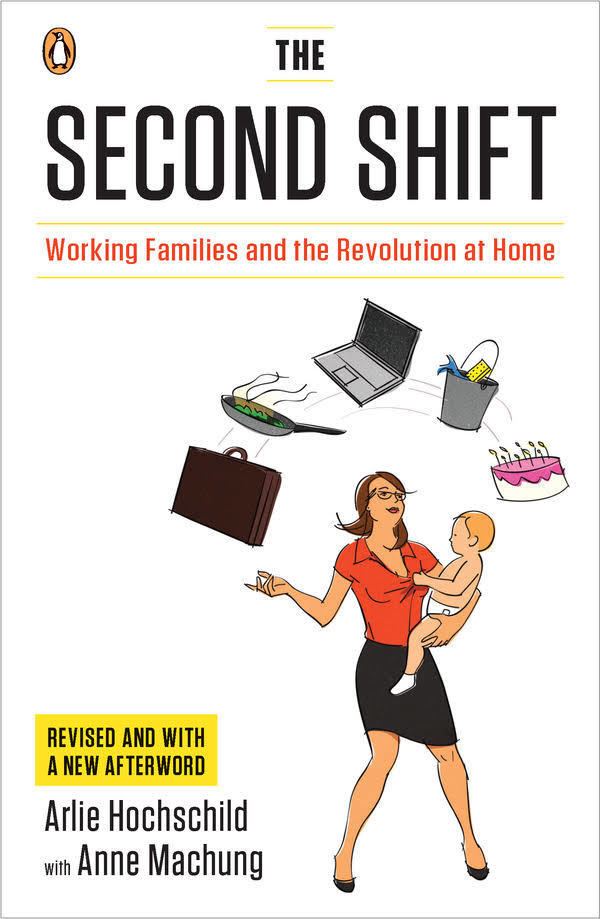Language English Originally published 1989 Genre Social science Country United States of America | Publisher Viking Penguin ISBN 9780143120339 | |
 | ||
Publication date 1989, with reissues in 1997 and 2012 Similar Arlie Russell Hochschild books, Family books | ||
Arlie russell hochschild author of the second shift discusses how far we ve come
The Second Shift: Working Parents and the Revolution at Home is a book by Arlie Russell Hochschild with Anne Machung, first published in 1989, and reissued with a new afterword in 1997. It was again reissued in 2012 with updated data and a new afterword. It has been translated into German (Zolnay Press), Japanese (Asahi Press), Dutch (Unibock Press), Arabic (International Publishers, Cairo, Egypt), Korean (Aha-chim-e-seul), and was published in Great Britain by Piatkus Press. In the text, Hochschild investigates and portrays the double burden experienced by late-20th-century employed mothers.
Contents
Summary
Coined after Arlie Hochschild's 1989 book, the term "second shift" is another way of describing the labor performed at home in addition to the paid work performed in the formal sector. In The Second Shift, Hochschild and her research associates "interviewed fifty couples very intensively" and observed in a dozen homes throughout the 1970s and 80s in an effort to explore the "leisure gap" between men and women. Through the depictions of couples' day-to-day practices, Hochschild applied three different ideas in regard to marital roles that she discovered during her research: transitional, traditional, and egalitarian. The traditional woman "wants to identify with her activities at home (as a wife, a mother, a neighborhood mom)". The egalitarian female partner "wants to identify with the same spheres her husband does, and to have an equal amount of power in the marriage". The transitional woman falls in between, blending the traditional and egalitarian ideologies. Most of the chapters are dedicated to the routines of a different couple, delving into the apparent and unnoticed motivations behind their behaviors. Similar to earlier research that is cited in the book, The Second Shift found that women still take care of most of the household and childcare responsibilities despite their entrance into the labor market. The "second shift" affected the couples, as they reported feelings of guilt and inadequacy, marital tension, and a lack of sexual interest and sleep. On the other hand, Hochschild shared the stories of a few men who equally shared the burden of domestic work and childcare with their wives, showing that while this scenario is uncommon, it is a reality for some couples. Hochschild's research also presented a clear division between the ideology preferences of the genders and social classes: the working class and men preferred the traditional idea; the middle class and women preferred the egalitarian one.
